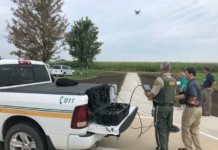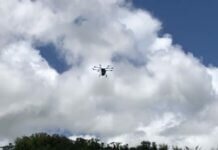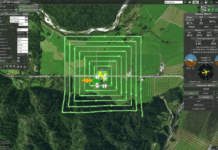The Michigan Department of Environmental Quality (DEQ) is using unmanned aircraft systems (UAS) technology to search for possible locations of per- and polyfluoroalkyl substance (PFAS) contamination.
Last week, the DEQ flew a drone over Lake Margrethe to locate springs that could be carrying PFAS contamination from past firefighting activities at the nearby Camp Grayling military base.
The DEQ used a DJI M210 drone fitted with both FLIR and standard cameras just offshore at an altitude of 50 to 100 feet above the lake. If cold springs entering the warmer lake are present, they will be visible with the FLIR camera. The agency explains that the entry of cold springs does not confirm the presence of PFAS contamination, but discovering the flow of groundwater from the base into surface waters will allow the DEQ to better target sampling efforts. Identifying the flow of groundwater into a surface water body may also assist in effective placement of treatment, if needed.
Following the creation of standards and procedures to protect public safety and address privacy concerns, the DEQ says it recently expanded the use of UAS technologies to assist in environmental investigations throughout the state.
“To the best of our knowledge, this the first time anyone has ever used a FLIR-equipped drone in the hunt for potential PFAS contamination,” notes Carol Isaacs, director of the Michigan PFAS Action Response Team (MPART). “Like our first-in-the-nation testing of public water systems, this innovative use of technology is another example of MPART’s proactive approach to this emerging contaminant.”
According to the DEQ, PFAS compounds are emerging and potentially harmful contaminants used in thousands of applications globally, including firefighting foam, food packaging and many other consumer products. These compounds also are used by industries such as tanneries, metal platers and clothing manufacturers.
MPART is overseeing the state’s $23 million effort to locate PFAS contamination, identify sources, and oversee remediation activities aimed at protecting the state’s water resources and mitigating risks to the public.













